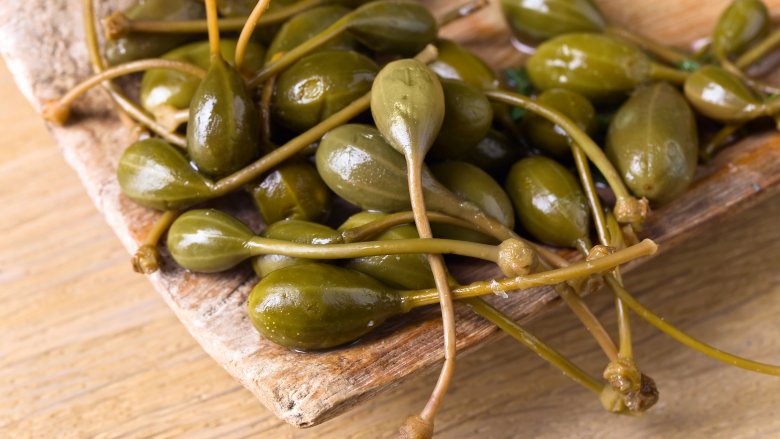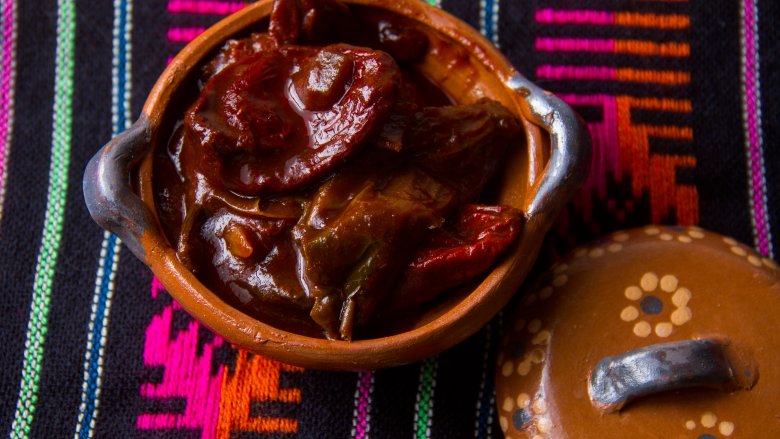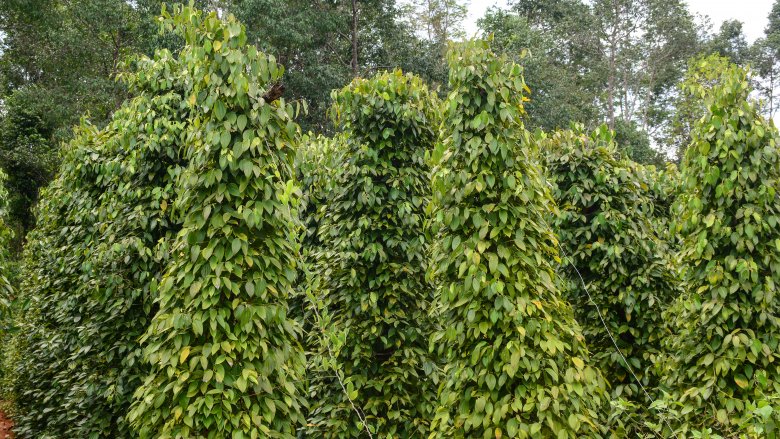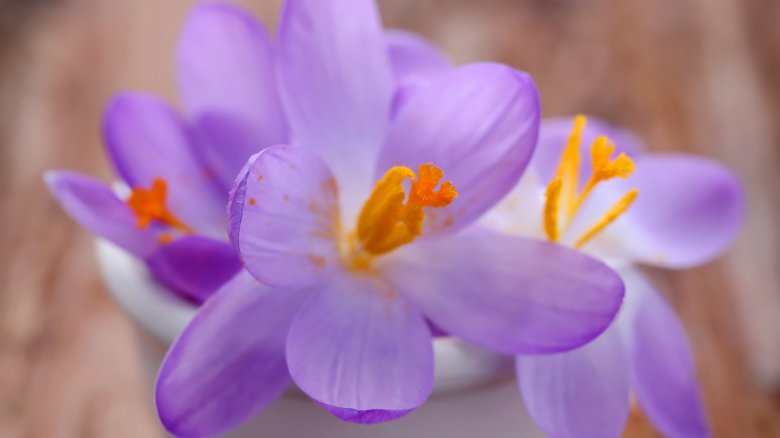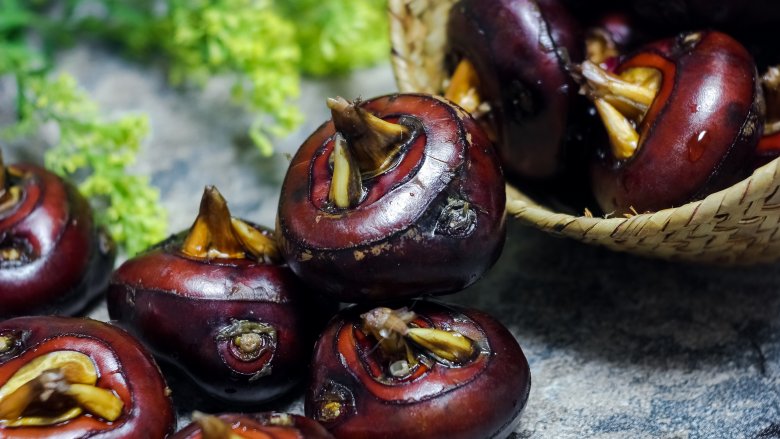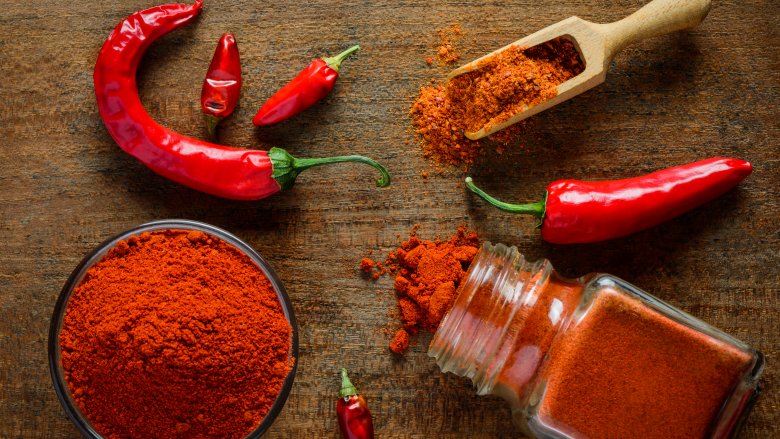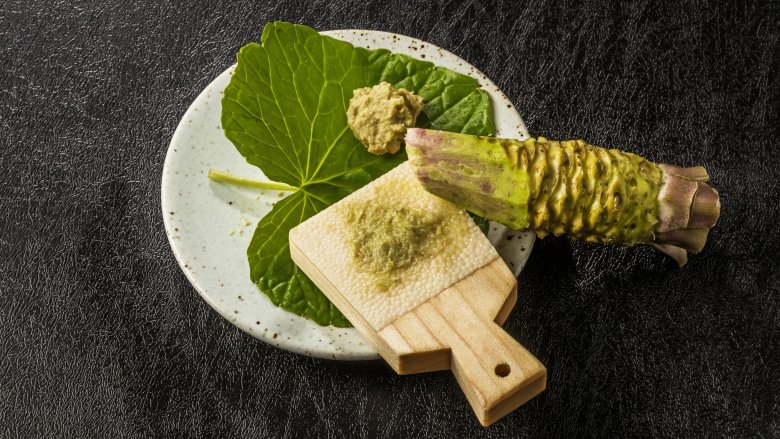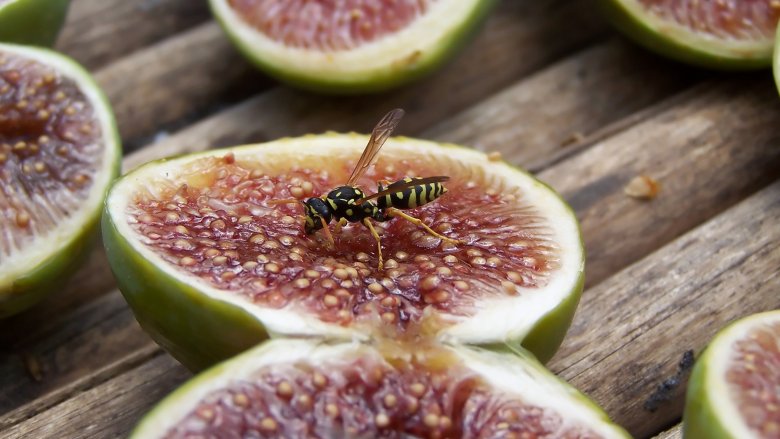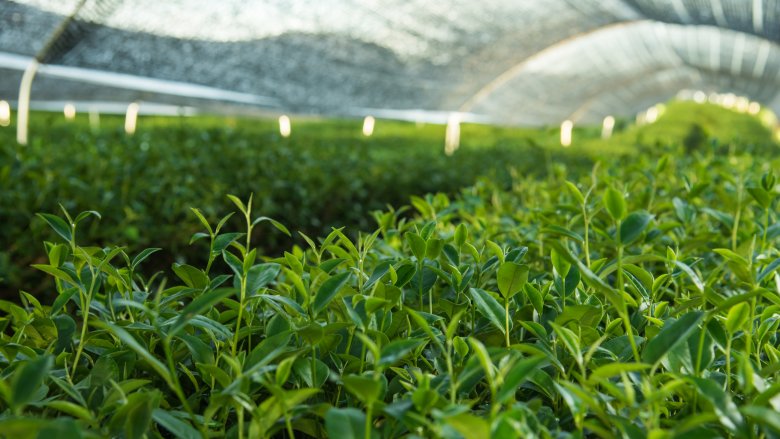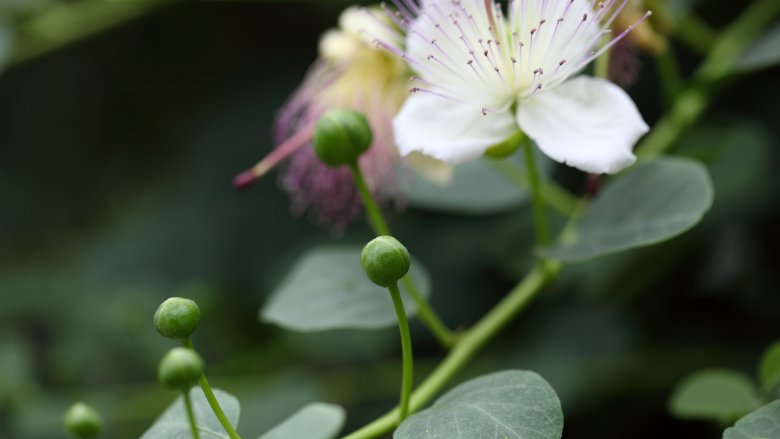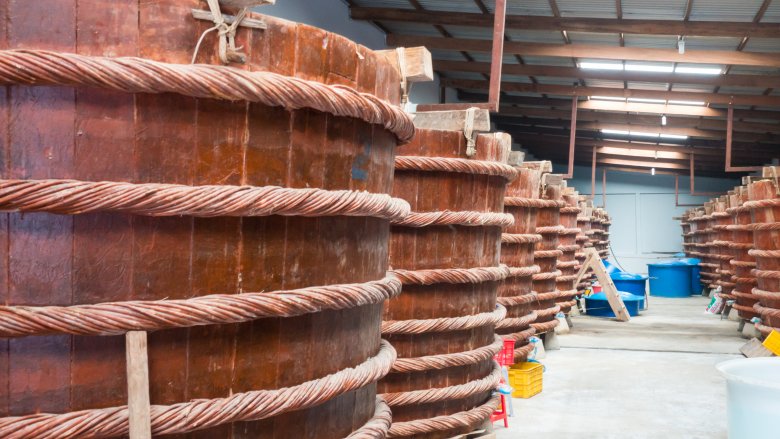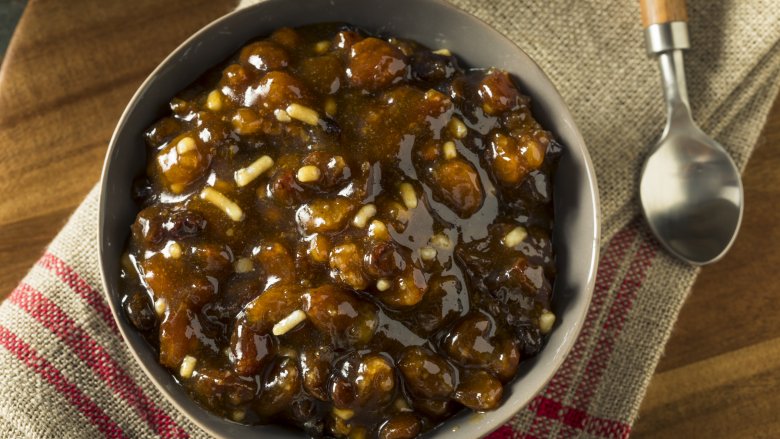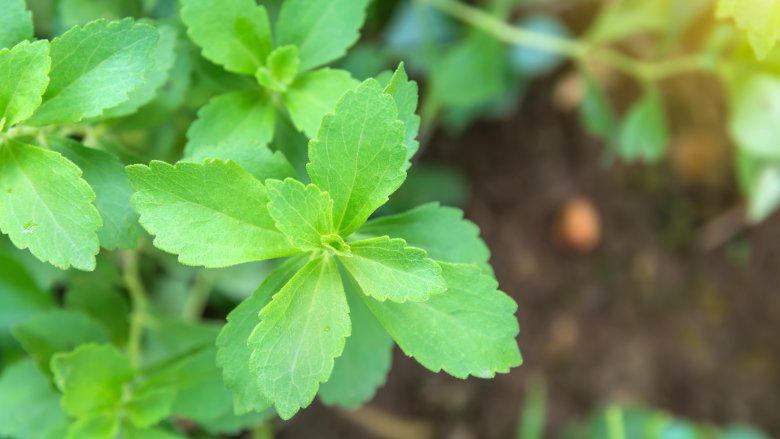Foods People Have No Clue Where They Come From
People are becoming more and more aware of exactly where their food comes from, with grocery stores and restaurants alike being held to standards that are getting increasingly high. Traceability is key, and you've probably noticed foods are more commonly being labeled with things like country of origin. Sure, we're proud when we serve a meal with things we bought at the farmers market or grew in our own gardens, but chances are good there are still some mysteries in your kitchen cupboards.
We're talking about the foods we take for granted, and don't really think twice about. They're on everyone's shopping list, they're staples in everyone's kitchen, we've opened countless jars and piled them on countless plates, but what are they, really? If you've ever asked yourself what a caper actually is, how peppercorns actually come into the world, and what the heck is matcha, there's good news. We have the answers for you.
Chipotles
Taste any dish made with chipotles, and you know it immediately. They bring an unmistakable, distinct flavor of spicy smokiness to anything they're in, and they're delicious. But what are they, anyway? A particular, special sort of pepper breed?
Not quite: they're jalapenos that have been smoked and dried. That's it, and they're actually so easy to make you can do it yourself if you have a smoker, some wood chips, and a bumper crop of red jalapeno peppers. All you need to do is load them into your smoker and keep it running low for a few hours, until the peppers are dried.
The restaurant Chipotle might make you think of modern, fast-casual dining and smoky, trendy flavors, but according to The Huffington Post, chipotles have been on the menu since the Aztecs started smoking jalapenos as a way of preserving them. They were on to something!
Pepper
Salt and pepper are standards when it comes to cooking, but have you ever wondered what pepper really is? It's not what you think it might be, starting with the fact it's actually a fruit.
Peppercorns grow in bunches on vines that can reach heights of up to 13 feet, and according to the Farmer's Almanac, people have been harvesting and using peppercorns as far back as Ancient Egypt. Unripe and raw, they're green, and it's only when they're cooked and dried that they turn into the black peppercorns everyone is most familiar with. Red and white varieties are the same exact fruits, just prepared different ways. It's only when the fruits fully mature and ripen that they turn red (and most are harvested before that), and white peppercorns are fruits that have matured but not ripened.
Pepper has been traded and prized for centuries, and according to the BBC, you can even grow it yourself. It's a tropical plant so it'll need some serious TLC, but how cool would that be?
Saffron
Saffron is notorious for being ridiculously expensive, and there's a good reason for that, found Business Insider. It sells for about $5,000 a pound, and that's because harvesting it is a time-consuming, labor-intensive process.
Those slender pieces of saffron are actually the stigma of the saffron crocus flower, and in case anyone skipped that day in biology, that means we're talking about the female part of the flower. It takes an acre of flowers to make only four pounds of the spice, and it gets even more complicated. The flowers only bloom for six weeks a year, and given that it takes 170,000 hand-picked flowers for each pound of saffron, you can imagine that's a lot of people working the fields. Most saffron is grown in Iran, where a combination of an arid growing season and cheap labor make it logistically possible. Once the flowers are picked, the stigmas are pulled out and dried, a long and delicate process that's done entirely by hand.
Water chestnuts
Water chestnuts add bite to a number of Asian dishes, but... what are they?
According to the Invasive Species Compendium, they're occasionally a problem. More formally called Eleocharis dulcis, water chestnuts are the small, round tubers that form at the end of a particular type of sedge grass native to southeast Asia. To put it into more familiar terms: they're root vegetables (like potatoes), and even though they resemble nuts, they're not related at all.
Sometimes wild, sometimes cultivated as a crop, it grows in swamps, along lakeshores and rivers, and when it spread to canals and irrigation ditches, it can cause a huge problem for surrounding agricultural lands. It's considered a weed in Malaysia, causes problems in the rice fields of Indonesia, and in some areas of the world the population of water chestnuts is on the decline due to their native swampy wetlands being converted into residential and industrial areas.
Paprika
Love sprinkling a bit of paprika on your deviled eggs, or in some rice for a bit of kick? You probably use it a lot, but you might be surprised to learn that paprika is sort of a blanket term that refers to nothing more complicated or exotic than ground capsicums (peppers). Paprika can refer to any kind of dried and ground pepper, and while some have a spicy, fiery kick, others are all sweetness, and some are more smoky.
According to Serious Eats, you should definitely be paying attention to what kind of paprika you're buying, because it's all different. Paprika made from, say, semi-sweet Hungarian peppers is a little bittersweet, Spanish pimenton has a distinctive smokiness, and some kinds even get their kick from some cayenne peppers. Now you know, and now you know you should definitely go out of your way to find a grocery store that offers up all different kinds of paprika.
Wasabi
Even if you think you love wasabi, chances are pretty good you may have never had the real thing. Real wasabi is one of the most difficult plants to cultivate on a large, commercial scale. Even if you order it in Japan, it's been estimated that only about five percent of wasabi served is real; the rest is a mixture of mustard, horseradish and food coloring — more than likely, that lump of green paste that comes with your sushi is completely fake.
So, what is the real thing? It grew wild in the mountains of Japan and was used by locals for hundreds of years, but growing it on a commercial scale takes some inside knowledge of exactly what nutrients the plants need — and it's a closely-guarded secret among wasabi farmers. The plants themselves are also closely guarded, reports the BBC, and since it's grown from either seeds or cuttings of a mother plant, you really need to be in the know to start growing your own. Anyone who does, though, ends up with a thick root that is traditionally ground into a paste against a piece of sharkskin mounted on a wooden board. Fresh is the only way to go — it loses all flavor about 15 minutes after being ground.
Figs
Figs are a delicious and healthy snack, and they're great in everything from breads to cookies. But you should know where they originally came from, because it's one of the most bizarre stories in the natural world.
Figs are basically flowers that function backwards — with the flowering happening on the inside of the pods, rather than the outside. Fig trees have traditionally relied on the aptly-named fig wasp for pollination, and it's a process that happens when the female wasp burrows into the male fig to lay her eggs. It's there that the majority of the wasps' life cycle happens: eggs are laid, babies hatch, grow, mate, and the young female wasps crawl out of the holes the males chew for them.
But we don't eat the male figs, only the female ones — female figs that wouldn't happen without the pollination from the wasps. Sometimes, female wasps crawl inside these tasty, tasty figs accidentally, where they die and are broken down by the enzymes in the fig. Crunch, crunch!
There's a bit of a bright side to this, though. According to the California Fig Advisory Board (via Huffington Post), the majority of figs produced on a commercial scale for today's market are self-pollinating. It wasn't always that way, though, so next time you bite into a Fig Newton, thank your friendly neighborhood fig wasp.
Matcha
It's everywhere, but what is it? Sure, you know it has something to do with green tea, but there's a fascinating process that makes matcha, well, matcha.
The process that turns green tea into matcha starts 20 days before the leaves are going to be harvested, says Bon Appetit. That's when they're covered to shield them from direct sunlight, and that makes the leaves increase the amount of chlorophyll and L-Theanine they produce. It's the increased chlorophyll levels that gives matcha its super-bright green color, and because when leaves are picked, de-stemmed, de-veined, and then ground into matcha powder, you're getting all the benefits of the vitamins and antioxidants in the leaves.
This isn't a new fad, either. It's been used in tea ceremonies in Japan since at least the 12th century, and the preparation practice has been traced back to China, where it predates Japanese ceremonies by about two hundred years. Sure, it's trendy, but it has an ancient pedigree.
Capers
Capers have a distinctive, briny, salty taste, and whatever you suspect they are, the real answer is even more surprising than that.
They're actually tiny flower buds, says Bon Appetit, and part of what makes capers so expensive is that they have to be harvested by hand. They come from an evergreen shrub called the Caper Bush or the Finder's Rose, and if they were left to flower, they would turn into beautiful, big white blooms (via Plants For A Future). If you were to grow your own Finder's Rose bush (and you absolutely can, as long as you're in a place that's warm enough), you'd find those capers to be incredibly bitter. It's only after they're brined that they turn into something you want to eat, and it's pretty impressive anyone ever figured that out.
The buds aren't the only useful part of the plant, either. Various parts of the Finder's Rose have been used to treat everything from skin conditions (like easy bruising) to coughs, eye infections, and stomach pains. The root-bark has even been used as a pain reliever, making this one plant that's perfect for your garden.
Worcestershire sauce
The first Worcestershire sauce was made by Lea and Perrins, and even though there are a number of copycats out there, they're the ones with the closely-guarded, secret, original recipe. The BBC says it dates back to at least 1837, and while there's a lot we don't know about where this comes from, what we do know... well, it's kind of gross.
The Huffington Post says essentially, Worcestershire sauce comes from a base that's nothing more than anchovies, left to ferment in vinegar for around 18 months. Other ingredients include things like molasses, garlic, salt, chili pepper extract, and onions, and none of that sounds like it would taste good. At all. Somehow, it works, and it might be thanks to an equally disgusting mystery ingredient, sometimes said to be the fetid-smelling asafoetida.
The story about its creation says chemists Lea and Perrins failed at their first attempt at a sauce, then stored the evidence away in a cellar. When they went to throw it away months later, they found that something magical had happened, and it was suddenly appealing. That makes it both gross and delicious.
Mincemeat
You've probably heard of mincemeat, a British staple that starts appearing in stores around Christmastime. If you cringe at the thought of a meat-and-fruit-filled pie, you can stop cringing — here's where the idea really comes from.
At one time, mincemeat really was made with meat. From the 15th to the 17th centuries, it was usually mutton, and it was mixed with prunes, dates, or raisins and soaked with wine or vinegar, then seasoned with spices. By the 18th century people were using brandy, and the idea was that it was a way to use sugars and alcohol to preserve meat without smoking or salting it. It was seen as adorably rural by the Victorian era, and it's changed again with the 20th century. Now, we don't need to worry about preserving meat as much — we have freezers and refrigerators to do that — so we've dropped the meat from most recipes (although sometimes, suet is still used). Modern mincemeat is mostly candied fruits, sugars, and liqueur, appealing to our more modern tastes while still holding onto its rich history. So go on — have some mincemeat.
Stevia
Stevia is a sweetener that's in the news — and shopping carts — more and more, and you know it's an option for people who are trying to get away from sugar. But what is it?
LiveScience says the stevia plant is native to Paraguay and Brazil, and it's one of those things that was "discovered" in the 1800s by Italian botanist Moises Santiago Bertoni after it had been used for centuries by locals. It's actually related to the daisy, and not only did local people chew the leaves as a treat, but it was also used to settle stomach problems and treat burns.
Today — thankfully — we don't need to chew the leaves to get the sweet extract from it. Pure Circle Stevia Institute describes the process by which stevia is extracted from the plant leaves as similar to the process that extracts tea from tea leaves. They're steeped in water, then filtered and purified with either water or alcohol. That last part of the process is what makes it taste more like sugar, and the higher the purity, the more concentrated it is.
